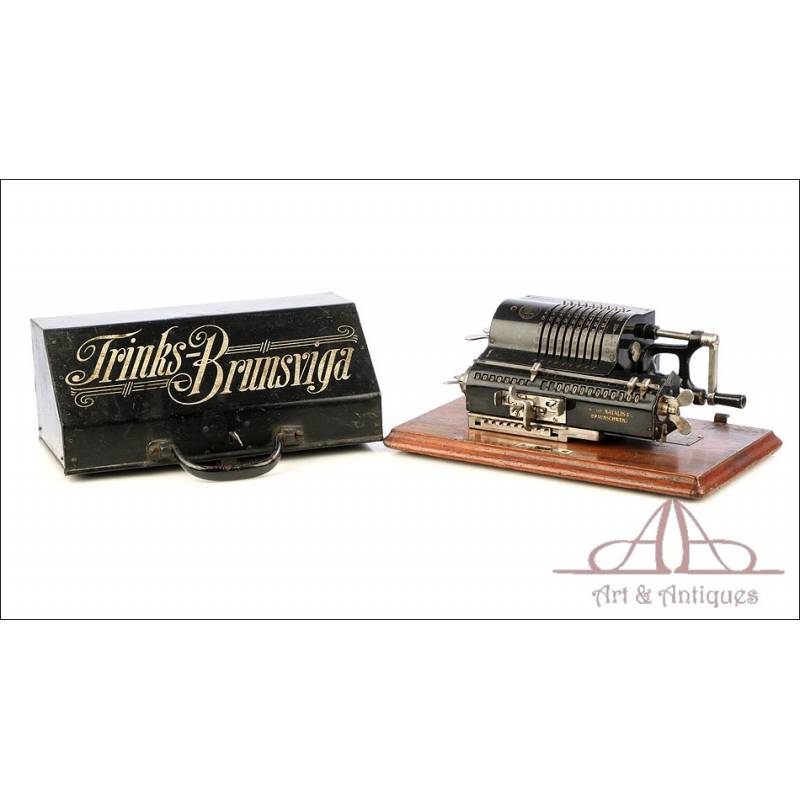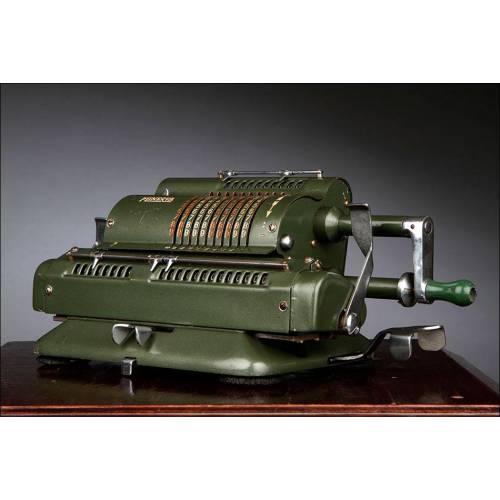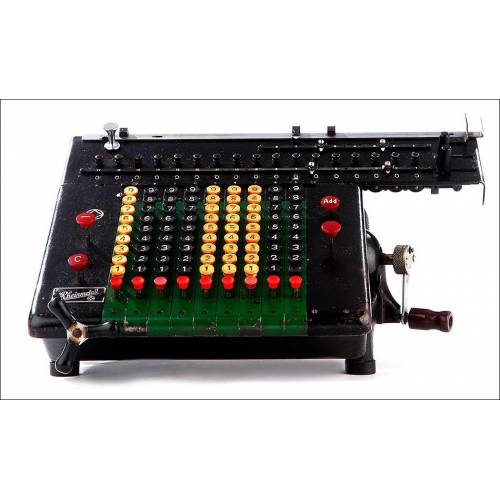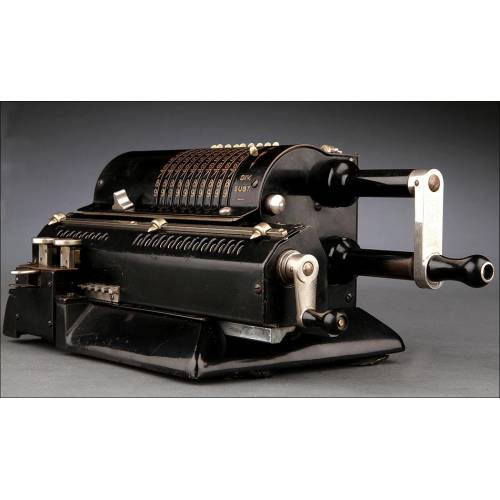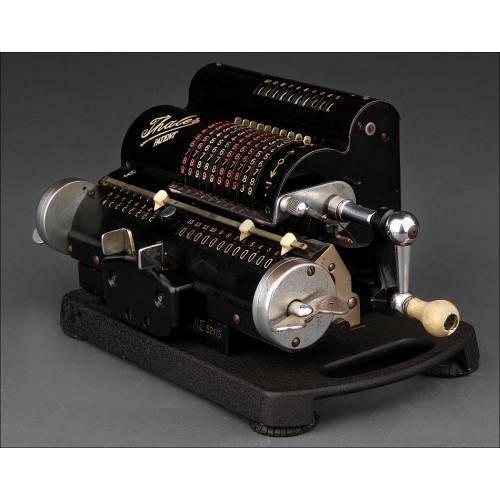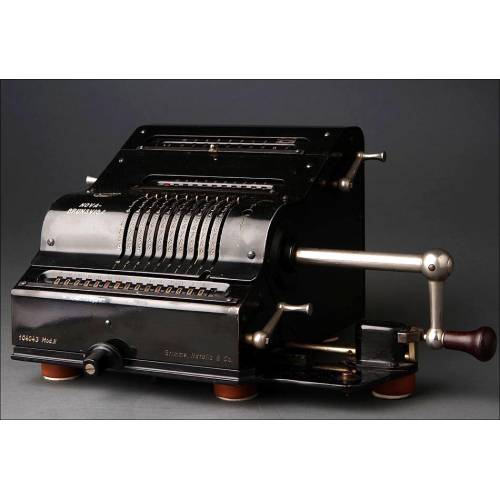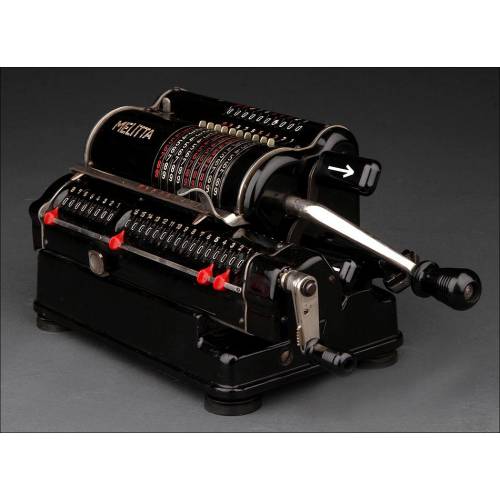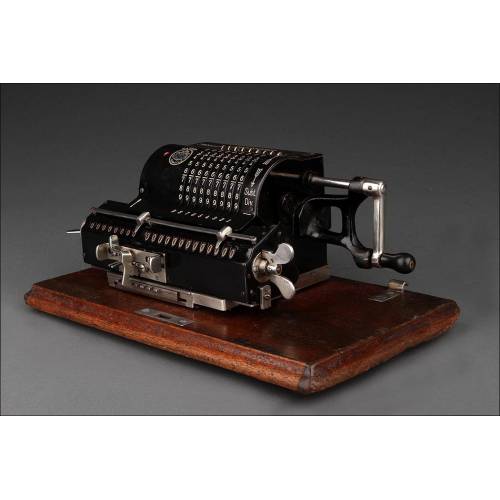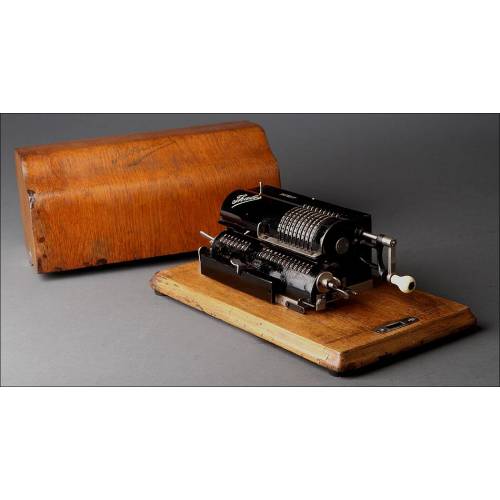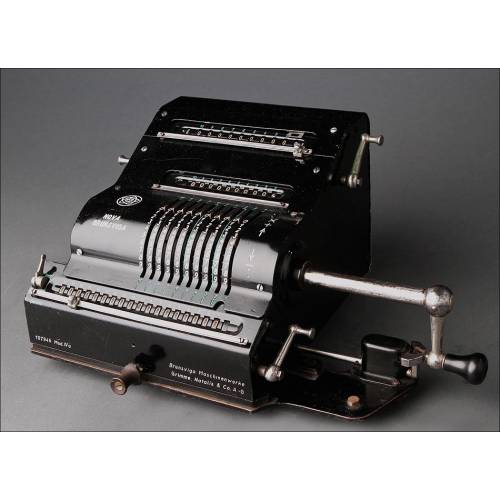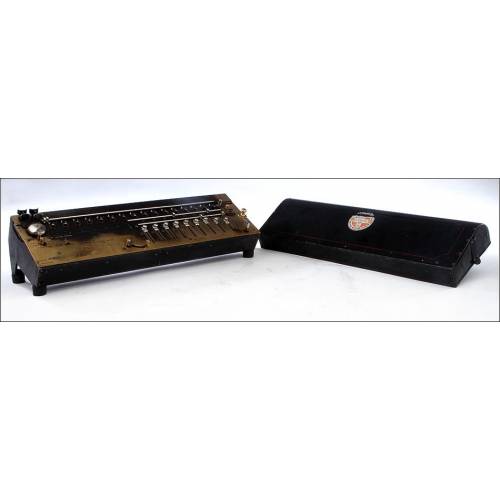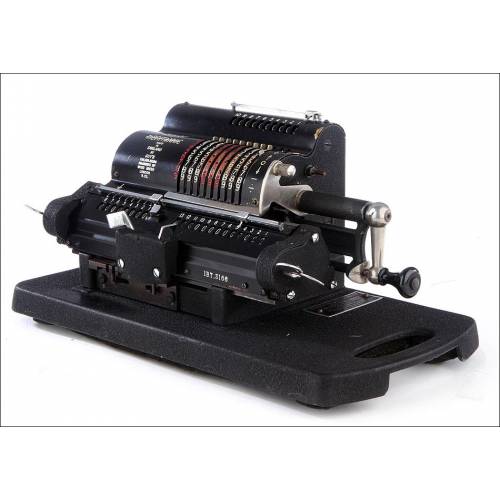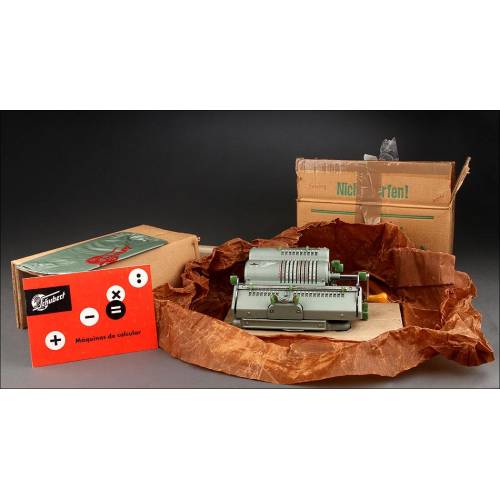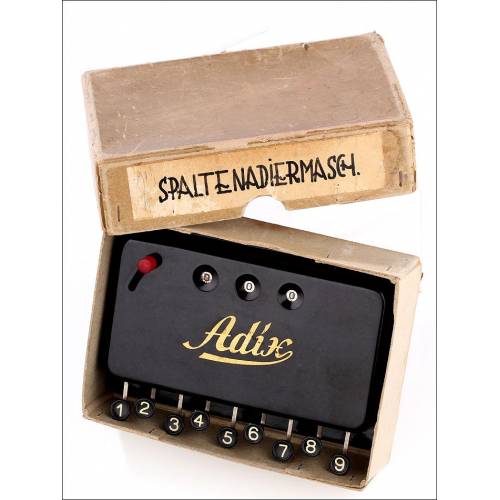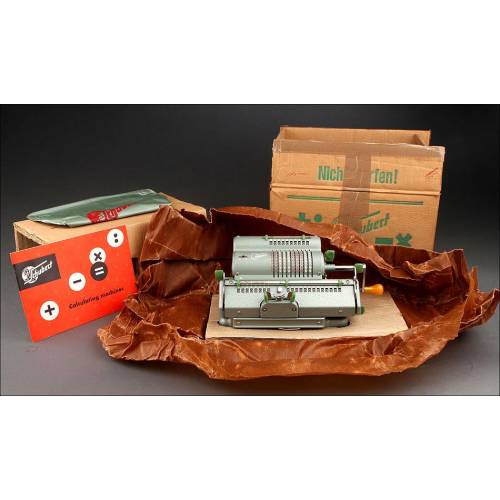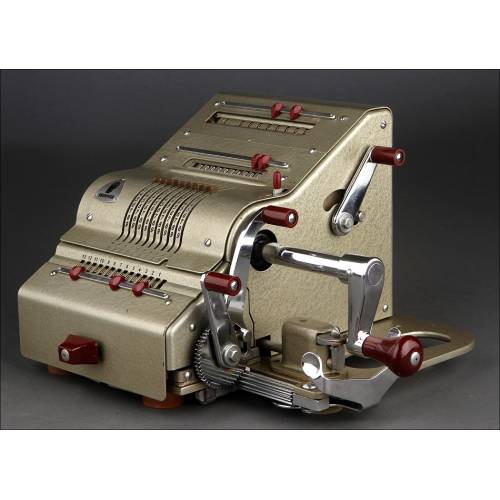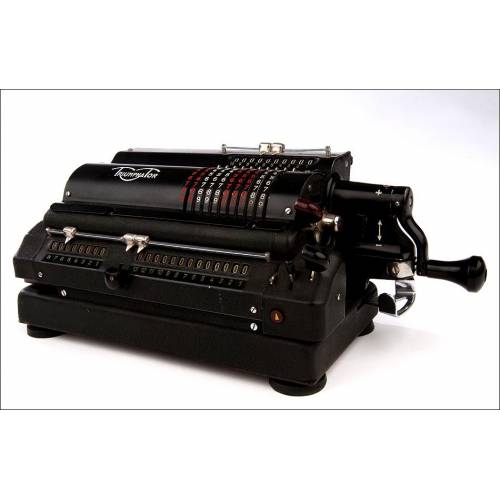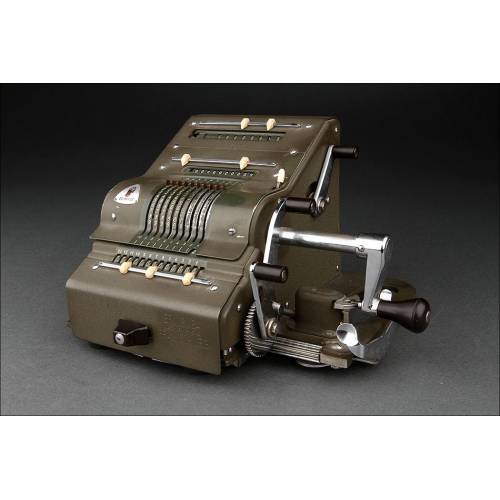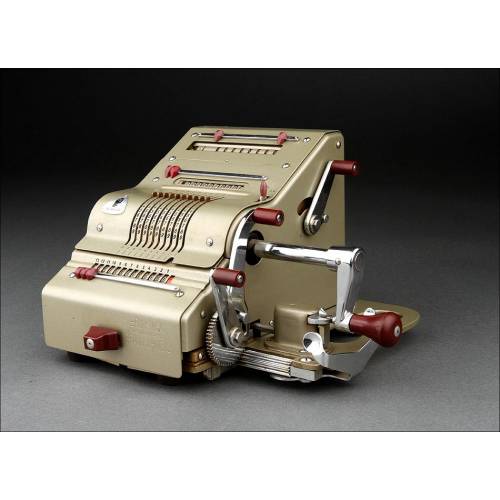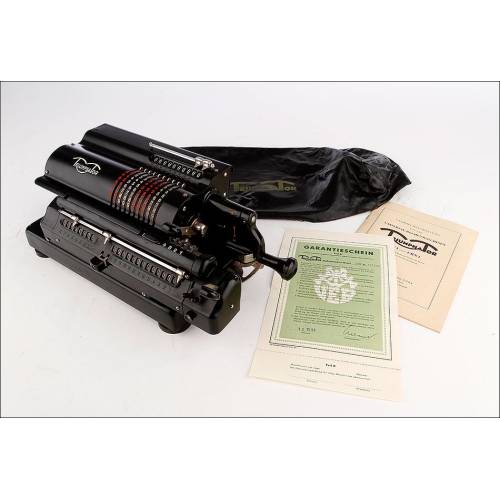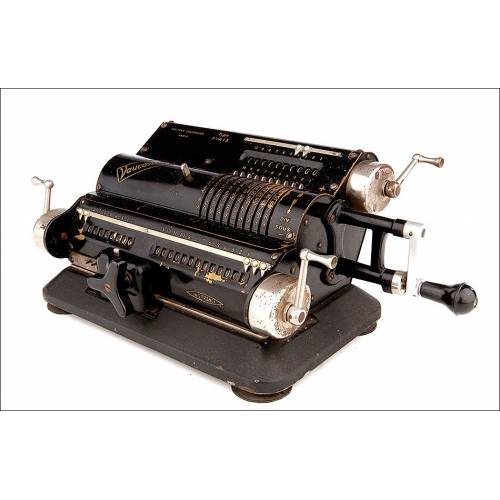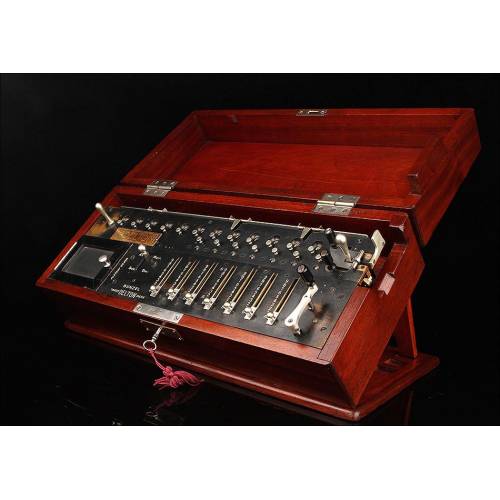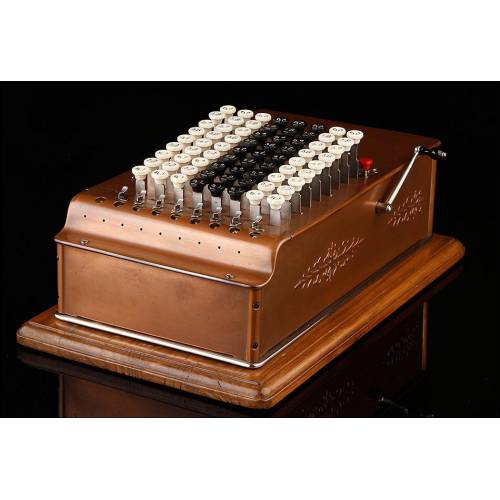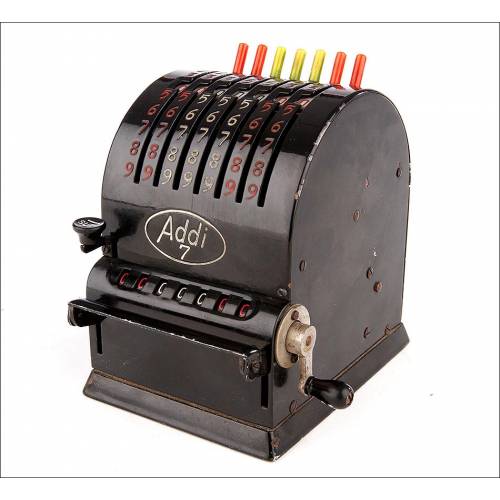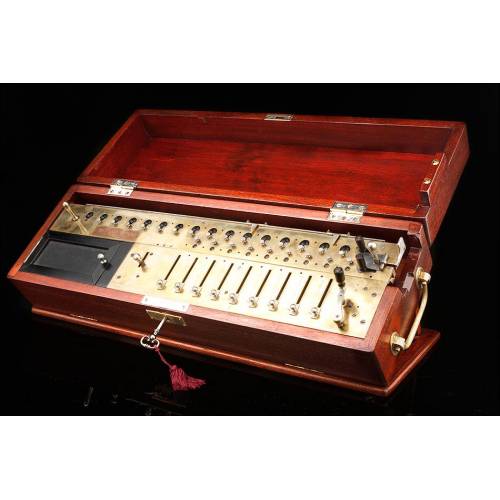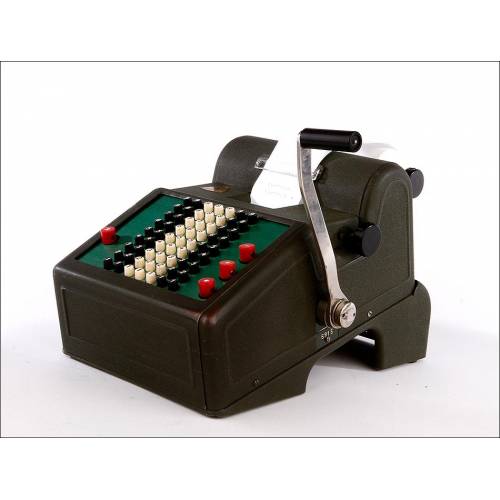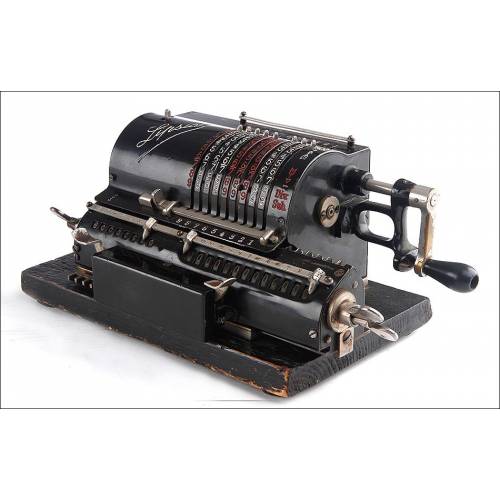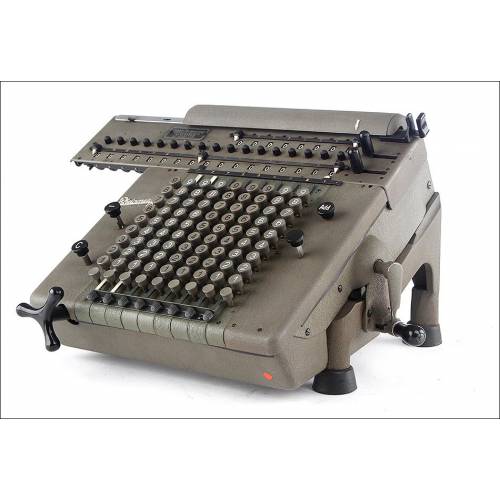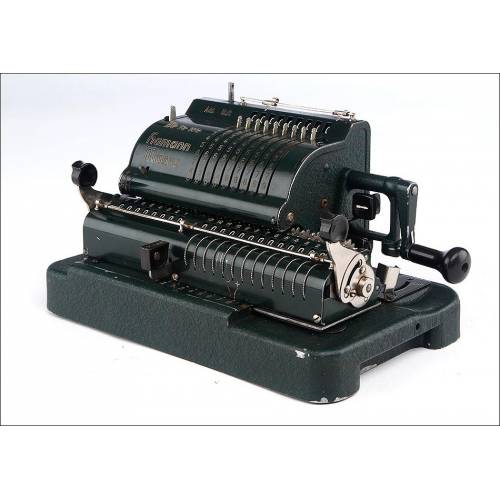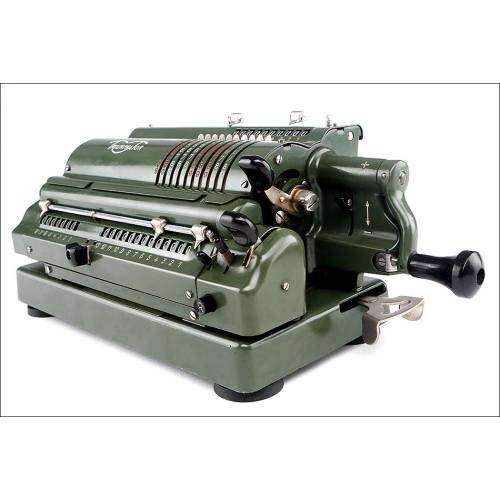C-987
Antique Trinks Brunsviga Mechanical Calculator. Germany, Circa 1930
Beautiful Trinks Brunsviga calculating machine with original lid and key. In excellent condition and fine working order.
Sold!
Antique Trinks Brunsviga mechanical calculator made in Germany circa 1930, in amazing condition and excellent working order. The calculator is complete and preserves the original metal lid and locking key. Aesthetically is finely preserved too: the lid shows off the brand name printed in big white lettering, perfectly legible. This machine allows to perform basic arithmetic operations with fully reliable outcomes. Its fluid and soft operation will turn the use of the calculator into a real pleasure for its owner. The machine stands on a solid-mahogany wooden base which keeps the original satin finish in fine condition. The base includes a lock which connects with the lid and can be operated with the key. The calculators black enameled finish is well preserved, and so is the ochre-colored paint which enhances the engraved digits and inscriptions. At the top of the machine we can see the models engraved name and serial number, Nº 30909. The left top butterfly handle bears an engraved number; thought it could seem to be 606. It is actually 909, the end of the serial number. At the right bottom corner we can see the manufacturers name in golden lettering; we can see this name at the plate riveted to the wooden base. Its excellent condition and attractive old-time design turn this antique Trinkis Brunsviga mechanical calculator into a collectors piece, full of charm and perfectly functional. Dimensions: Base: Width: 15.2 in / 38 cm. Depth: 8.6 in / 21.5 cm. Calculator: Top Width: 6.12 in / 15.3 cm. Bottom Width: 8.8 in / 22 cm. Height: 4.8 in / 12 cm.Brunsviga Calculators History The firm Grimme, Natalis & Co (GNC) was established in 1871 to build sewing machines and domestic appliances at Braunschweig, Germany. In 1892 engineer Franz Trinks was instrumental in securing the manufacturing rights to the Odhner calculator patents. The first machines were built according to W.T. Odhner's 1890 design and were distributed under the brand name "Brunsviga" (Latin for Braunschweig). Trinks continued to develop and refine the Brunsviga calculator over a period of almost 30 years. The "new Brunsviga" range appeared in 1925, and the "13-series" in 1927. Production resumed after the 1939-45 war with a new range of 13-series machines, a motorised version of the stepped-drum machine, and a range of small adding machines. Grimme, Natalis & Co was originally established as a "Commanditgesellschaft auf Aktien". On its fiftieth anniversary in 1921 it became Grimme, Natalis & Co AG. In 1927 the name was changed to "Brunsviga Maschinenwerke Grimme, Natalis & Co AG", and later to just "Brunsviga Maschinenwerke AG" In 1957 Brunsviga entered into an agreement with Olympia Werke AG, which led ultimately to the company being absorbed into Olympia in 1959. Production continued for a time as the Brunsviga Division of Olympia, before coming to an end in the late 1960s. About half a million Brunsviga machines were produced over a period of almost eighty years. The Trinks-Brunsviga calculators work with the pinwheel system developed by W.T. Odhner in the 1870s. It was inspired in turn by the arithmometer designed by Leibniz in the 16th century.

